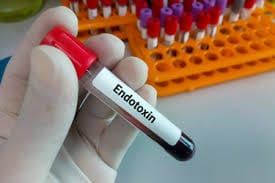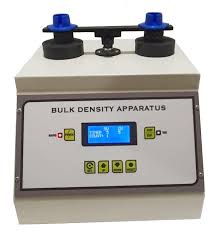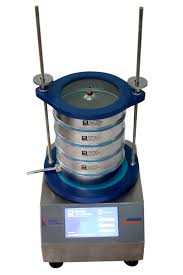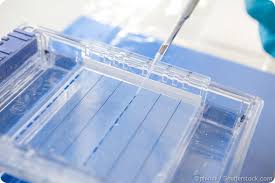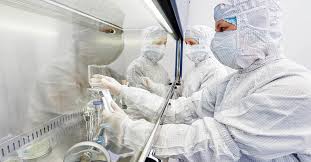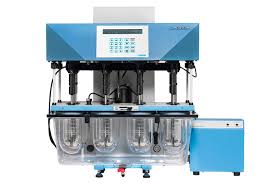|
Getting your Trinity Audio player ready... |
Limit Tests in Pharmaceuticals: An Overview
Introduction to Limit Tests
Limit tests are used in pharmaceutical analysis to determine the presence and quantity of impurities in substances. These tests are designed to check if the levels of impurities in a substance exceed acceptable limits. Impurities, when present in higher concentrations, can negatively affect the quality, safety, and efficacy of pharmaceutical products. Therefore, limit tests are essential for ensuring that drugs and other substances comply with strict safety standards.
Types of Limit Tests
Limit tests are designed to assess various impurities that might be present in pharmaceutical substances. These tests are carried out using a series of well-defined analytical procedures that compare a sample against a known standard. Below is a list of limit tests commonly conducted in pharmaceutical testing:
- Limit Test for Aluminium
- Limit Test for Ammonium
- Limit Test for Arsenic
- Limit Test for Calcium
- Limit Test for Chlorides
- Limit Test for Fluorides
- Limit Test for Heavy Metals
- Limit Test for Iron
- Limit Test for Lead in Sugars
- Limit Test for Magnesium
- Limit Test for Magnesium and Alkaline-Earth Metals
- Limit Test for Nickel in Polyols
- Limit Test for Phosphates
- Limit Test for Potassium
- Limit Test for Sulfates
Detailed Procedures of Limit Tests
Limit Test for Aluminium
Purpose: To determine the level of aluminium contamination in pharmaceutical products.
- Solution Preparation:
- Prepare a 5 g/L solution of hydroxyquinoline in chloroform by dissolving 0.5 g of hydroxyquinoline in 100 mL chloroform.
- Procedure:
- Mix the prescribed solution with 20 mL of chloroform and shake.
- Add 10 mL of a 5 g/L hydroxyquinoline solution in chloroform and shake again.
- Dilute the combined chloroform solutions to 50.0 mL.
- Use the same method for the blank and reference solutions.
- Measure fluorescence intensity using an excitant beam at 392 nm and a secondary filter centered on 518 nm.
- Result: The fluorescence intensity of the test solution should not exceed that of the standard.
Limit Test for Ammonium
Purpose: To quantify ammonium contamination.
- Method A
Solution Preparation:- Prepare 25% sodium hydroxide and ammonium standard solutions.
- Mix potassium tetraiodomercurate solution with sodium hydroxide.
Procedure:
- Dissolve the prescribed substance in 14 mL water in a test tube and add alkaline potassium tetraiodomercurate solution.
- Prepare a standard solution similarly using 1 ppm ammonium standard solution.
- After 5 minutes, compare the yellow color intensity of the test and standard solutions.
Result: The test solution’s yellow color should not be more intense than that of the standard.
- Method B
Solution Preparation:- Prepare an ammonium standard solution (1 ppm NH4).
Procedure:
- Add the substance to be tested to 1 mL of water and add magnesium oxide and silver manganese paper.
- If the paper shows a grey color, compare it to the standard solution prepared in the same manner.
Result: The gray color should not be more intense than the standard.
Limit Test for Arsenic
Purpose: To assess the presence of arsenic contamination.
- Method A
Solution Preparation:- Prepare stannous chloride and potassium iodide solutions.
- Create a 1 ppm arsenic standard solution.
Procedure:
- Dissolve the prescribed substance in 25 mL of water, add hydrochloric acid, stannous chloride, and potassium iodide.
- Immerse the flask in a water bath and prepare the standard in the same way.
- After 2 hours, compare the stain on mercuric bromide paper with that of the standard.
Result: The stain should not be more intense than that of the standard.
- Method B
Solution Preparation:- Prepare hypophosphorous reagent and arsenic standard solution.
Procedure:
- Add the substance and hypophosphorous reagent to a test tube and heat in a water bath.
- Prepare the standard similarly using arsenic standard solution.
- After heating, compare the color intensity between the test solution and the standard.
Result: The test solution’s color should not be more intense than the standard.
Limit Test for Calcium
Purpose: To determine the calcium content in pharmaceutical substances.
- Solution Preparation:
- Prepare alcoholic calcium standard solution, ammonium oxalate solution, and dilute acetic acid.
Procedure:
- Add ammonium oxalate solution to the calcium standard solution and the substance to be tested.
- Shake and allow the mixture to stand for 15 minutes.
- Compare the opalescence between the test solution and standard.
Result: The test solution should not show more opalescence than the standard.
Limit Test for Chlorides
Purpose: To determine the chloride content.
- Solution Preparation:
- Prepare dilute nitric acid and silver nitrate solution.
- Create a 5 ppm chloride standard solution.
Procedure:
- Add dilute nitric acid and silver nitrate solution to the substance being tested.
- Compare the opalescence in the test solution with that of the standard solution.
Result: The test solution’s opalescence should not be more intense than that of the standard.
Limit Test for Fluorides
Purpose: To quantify fluoride contamination.
- Solution Preparation:
- Prepare 0.1 M sodium hydroxide and fluoride standard solution.
Procedure:
- Distill the substance to be examined with sulfuric acid and water, collecting the distillate in a volumetric flask.
- Add sodium hydroxide and phenolphthalein to the distillate.
- Prepare the standard in the same manner using the fluoride standard solution.
Result: The test solution’s blue color should not be more intense than that of the standard.
Summary Table of Limit Test Procedures
| Test | Solution Preparation | Procedure | Result |
| Aluminium | Hydroxyquinoline in chloroform | Shake with chloroform solutions, measure fluorescence | Test solution fluorescence must not exceed standard |
| Ammonium (Method A) | Sodium hydroxide, ammonium standard, potassium tetraiodomercurate | Add solutions to test tube, compare yellow color | Test solution yellow color must not exceed standard |
| Ammonium (Method B) | Ammonium standard solution | Add magnesium oxide and silver paper, compare gray color | Test solution gray color must not exceed standard |
| Arsenic (Method A) | Stannous chloride, potassium iodide, arsenic standard | Add solutions, heat in a water bath, compare stain | Stain must not be more intense than standard |
| Arsenic (Method B) | Hypophosphorous reagent, arsenic standard | Heat mixture in a water bath, compare color | Test solution color must not exceed standard |
| Calcium | Calcium standard solution, ammonium oxalate | Add solutions, compare opalescence | Test solution opalescence must not exceed standard |
| Chlorides | Nitric acid, silver nitrate, chloride standard | Add solutions, compare opalescence | Test solution opalescence must not exceed standard |
| Fluorides | Sodium hydroxide, fluoride standard | Distill substance, add reagents, compare blue color | Test solution blue color must not exceed standard |
Method F: Lead Test
Solution Preparation
- Lead Standard Solution (10 ppm Pb): This is prepared by referring to the standard solutions outlined in the limit tests section. Typically, a certain amount of lead is dissolved in a defined volume to achieve a concentration of 10 parts per million (ppm) lead.
- Test Solution:
- Start by placing the prescribed quantity or volume of the substance to be examined in a clean, dry 100 mL long-necked combustion flask. If excessive foaming occurs during the reaction, use a 300 mL flask instead.
- Secure the flask at a 45° angle. If the substance is a solid, add 8 mL of sulfuric acid and 10 mL of nitric acid to moisten the sample thoroughly. If the substance is liquid, simply add a few milliliters of the acid mixture.
- Heat gently until the reaction starts. Once it begins, allow the reaction to subside, then continue adding the same mixture of acids in portions. After each addition, heat until a total of 18 mL of the acid mixture has been incorporated.
- Increase the heat and allow the solution to boil gently until it darkens. After cooling, add 2 mL of nitric acid and heat again until the solution darkens further.
- Keep heating and adding nitric acid until no further darkening occurs. Continue heating until dense white fumes are visible.
- Cool the solution and carefully add 5 mL of water. Boil gently and allow it to evaporate to 2-3 mL. If the solution remains yellow, add 1 mL of strong hydrogen peroxide solution and evaporate again until dense white fumes are produced.
- If the solution is still yellow, repeat the process of adding 5 mL of water and 1 mL of hydrogen peroxide solution until the solution becomes colorless. Finally, dilute cautiously with water, ensuring the volume does not exceed 25 mL.
- Adjust the pH to 3.0-4.0 using short-range pH indicator paper and concentrated ammonia. Add 2 mL of buffer solution pH 3.5 and then 1.2 mL of thioacetamide reagent. Dilute to 50 mL with water, mix thoroughly, and allow the solution to stand for 2 minutes.
- Reference Solution (Standard): Prepare this by using the prescribed volume of the lead standard solution (10 ppm Pb), following the same procedure as for the test solution.
- Monitor Solution: Prepare as for the test solution, but add the prescribed volume of lead standard solution (10 ppm Pb) instead of the substance to be examined.
- Blank Solution: Prepare by following the same steps as the test solution, omitting the substance to be examined.
System Suitability
- The reference solution should exhibit a brown color compared to the blank solution.
- The monitor solution should be at least as intense as the reference solution.
Result Interpretation
- The brown color in the test solution should not be more intense than that in the reference solution. If necessary, filter the solutions through a suitable membrane filter with a nominal pore size of 0.45 µm to ensure uniformity and clarity before comparing the spots obtained with different solutions.
Method G: Lead Test Using High-Pressure Digestion
Solution Preparation
- Lead Standard Solution (10 ppm Pb): Prepare as outlined in the limit tests section.
- Test Solution:
- Weigh no more than 0.5 g of the substance to be examined and place it in a suitable clean beaker.
- Gradually add 2.7 mL of sulfuric acid, 3.3 mL of nitric acid, and 2.0 mL of strong hydrogen peroxide solution while using a magnetic stirrer. Allow the substance to react with each reagent before adding the next one.
- Transfer the mixture into a dry, high-pressure-resistant digestion vessel (preferably made of fluoropolymer or quartz glass).
- Reference Solution (Standard): Prepare by replacing the substance to be examined with the prescribed volume of lead standard solution (10 ppm Pb).
- Monitor Solution: Prepare by following the procedure for the test solution but adding the volume of lead standard solution as prescribed for the reference solution.
- Blank Solution: Prepare as for the test solution, omitting the substance to be examined.
Digestion Process
- Place the digestion vessel in a laboratory microwave oven. Depending on the type of microwave oven used (energy-controlled, temperature-controlled, or high-pressure), follow the manufacturer’s instructions carefully for the digestion cycle.
- After the first digestion cycle, cool the vessels before opening. Add 2.0 mL of strong hydrogen peroxide solution and digest using the second program.
- After the second cycle, cool the vessels again and repeat the addition of hydrogen peroxide and digestion, if needed, to ensure a clear solution.
Further Processing
- Cool and dilute cautiously with water, transferring the solution into a flask with a total volume not exceeding 25 mL.
- Use pH indicator paper to adjust the pH to 3.0-4.0 using concentrated ammonia. Dilute to 40 mL with water and mix thoroughly.
- Add 2 mL of buffer solution pH 3.5 and 1.2 mL of thioacetamide reagent. Dilute the solution to 50 mL with water, mix, and let it stand for 2 minutes.
- Filter the solutions through a suitable membrane filter with a pore size of 0.45 µm before comparing the spots obtained from different solutions.
System Suitability
- The spot from the reference solution should display a brown color compared to the blank solution.
- The monitor solution should have a spot intensity at least as strong as the reference solution.
Result Interpretation
- The brown color in the test solution should not be more intense than that in the reference solution.
Conclusion
Limit tests play a vital role in ensuring the safety and quality of pharmaceutical products by detecting harmful or undesirable impurities in substances. These tests are part of the standard procedures followed in pharmaceutical analysis to confirm that products meet regulatory guidelines for purity. The methods described above are examples of common limit tests used for various impurities such as aluminium, ammonium, arsenic, calcium, chlorides, and fluorides, ensuring that the substances used in pharmaceutical formulations are safe for human use.




